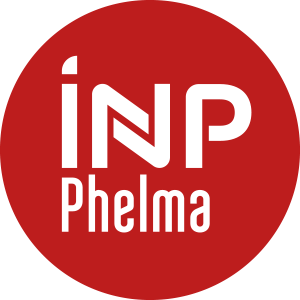Number of hours
- Lectures 30.0
- Projects 0
- Tutorials 10.0
- Internship 0
- Laboratory works 4.0
ECTS
ECTS 4.0
Goal(s)
- Radiation Matter Interactions (22h)
This lecture introduces the basic concepts of radiation-matter interactions : different modes of interaction of charged particules with matter (electron, positron, alpha, proton, ions) as well as the interactions of neutral radiations (photons and neutrons) with matter. The bases of radio-protection are also presented, with a description of particle interactions in biological matter and the standard radioprotection units.
- Nuclear Detectors (22h)
The purpose of this set of lectures is to provide the students with a description of the main detection principles for charged (electron, proton, alpha) and neutral (photon and neutrons) particles. The course presents the most common devices used in nuclear and particle physics with an emphasis on gazeous detectors, semi-conductor devices and scintillators detectors.
Content(s)
- Radiation Matter Interactions (16h lecture + 6h exercices)
I. Reminder: Basic concepts - Units
I.1 Components of Matter and the 4 interactions
I.2 Units and definition
I.3 Atomic nucleus
I.4 Cross-sections and reactions
I.5 Application: the Rutherford experiment
I.6 Coulomb Elastic interactions
II. Charged Particle interacting with matter
II.1 Introduction : the different modes of interactions of electron/ion with matter
II.2 Stopping power of heavy charged particules
II.3 Stopping power of electron and positron
II.4 Cerenkov, Transition radiations
IV. Photon Interacting with matter
IV.1 Introduction : the different modes of interactions of photon with matter
IV.2 Compton effect
IV.3 Photoelectric effect
IV.4 Paire creation
V. Neutron interacting with matter
VI. Introduction to radio-protection
- Nuclear Detectors (22h)
I. Introduction
Reminder : interaction particle-matter
General operating of a detector
Statistics and error propagation
II. General characteristics of a detector
Sensitivity & linearity
Efficiency and resolution power, dead time
III. Gazeous detectors
Ionisation, excitation and recombination electron and ion transport
Operating modes of gazeous detectors
Signal shaping and Acquisition
IV. Semi-conductor devices
Reminder: basics of semi-conductors
Characterisitics of Germanium and Silicium devices
Use for photon detection
V. Scintillator devices
General properties and classification
Organic scintillators
Inorganic scintillators
gazaeous scintillators
Readout and Photomultipliers
Prerequisites
- Radiation Matter Interactions
Nuclear Physics 1
- Nuclear Detectors
Radiation Matter Interactions
Semester 8 - The exam is given in english only 
Written exam (2 hours). Course notes permitted (1 double-sided A4 page). Calculator required. Same conditions for the second session.
This course brings 2.0 ECTS to students in UE Energie nucléaire
This course brings 3.0 ECTS to students in
Semester 8 - This course is given in english only
Glenn F. KNOLL, "Radiation Detection and Measurement", John Wiley and Sons Ed., 2010
William R. LEO, "Techniques for Nuclear and Particle Physics Experiments: A How-To Approach", Springer-Verlag, 1994
Abdallah LYOUSSI et FrançoiseFOULON, "Détection de rayonnements et instrumentation nucléaire", EDP Sciences, 2010



